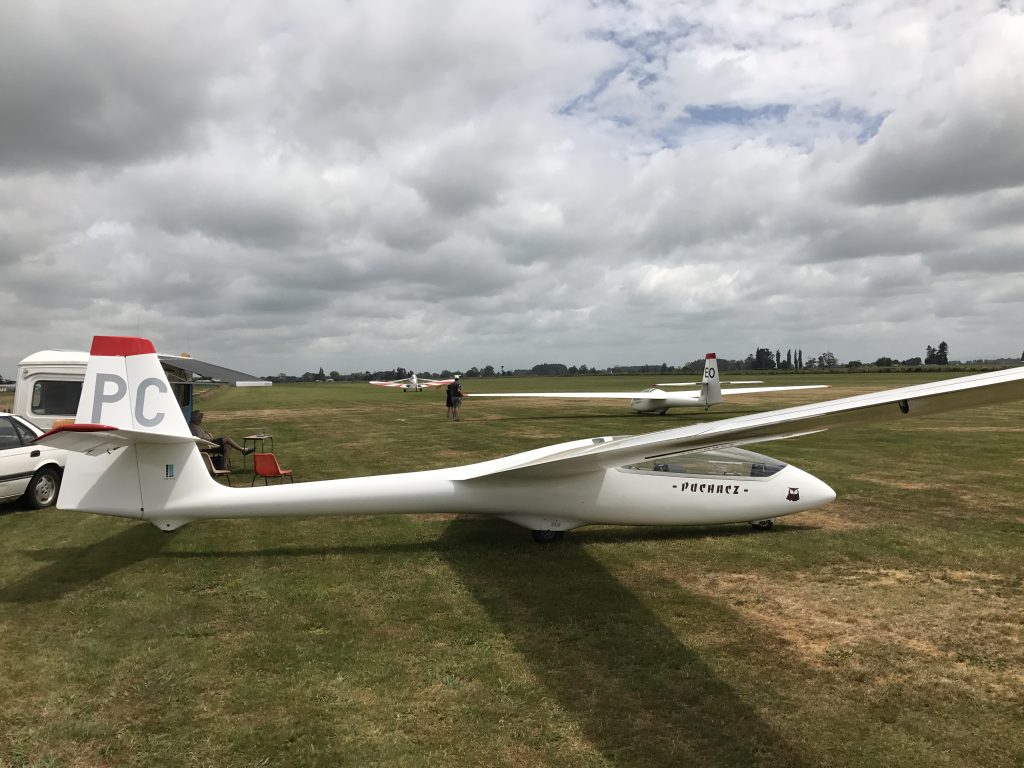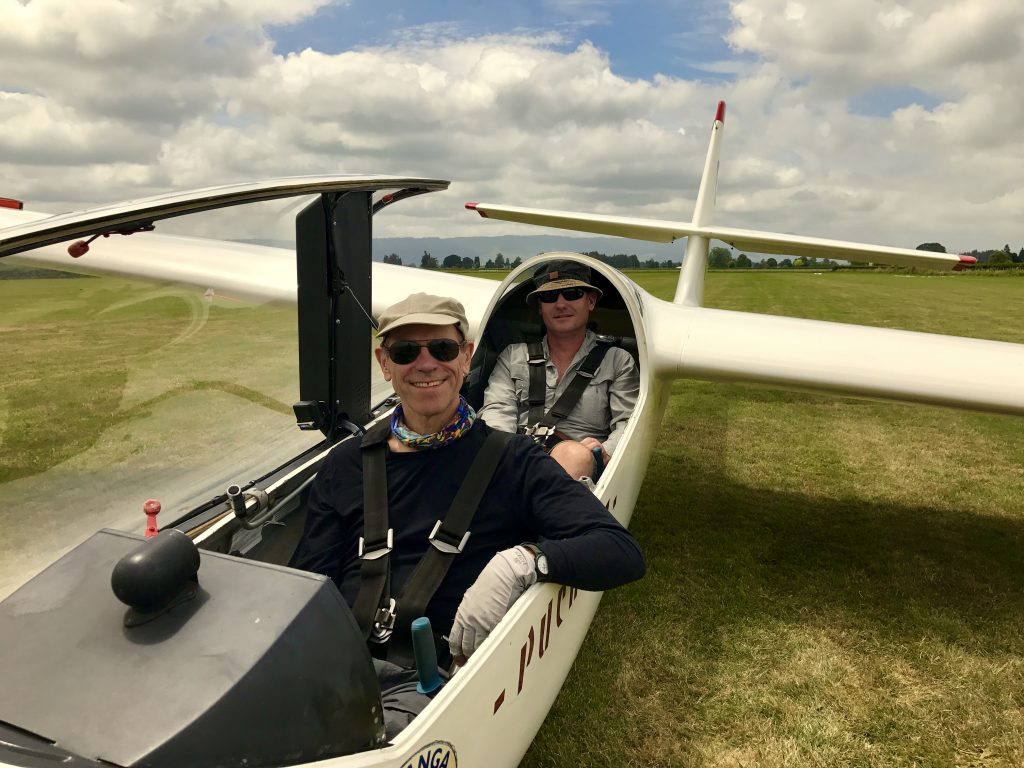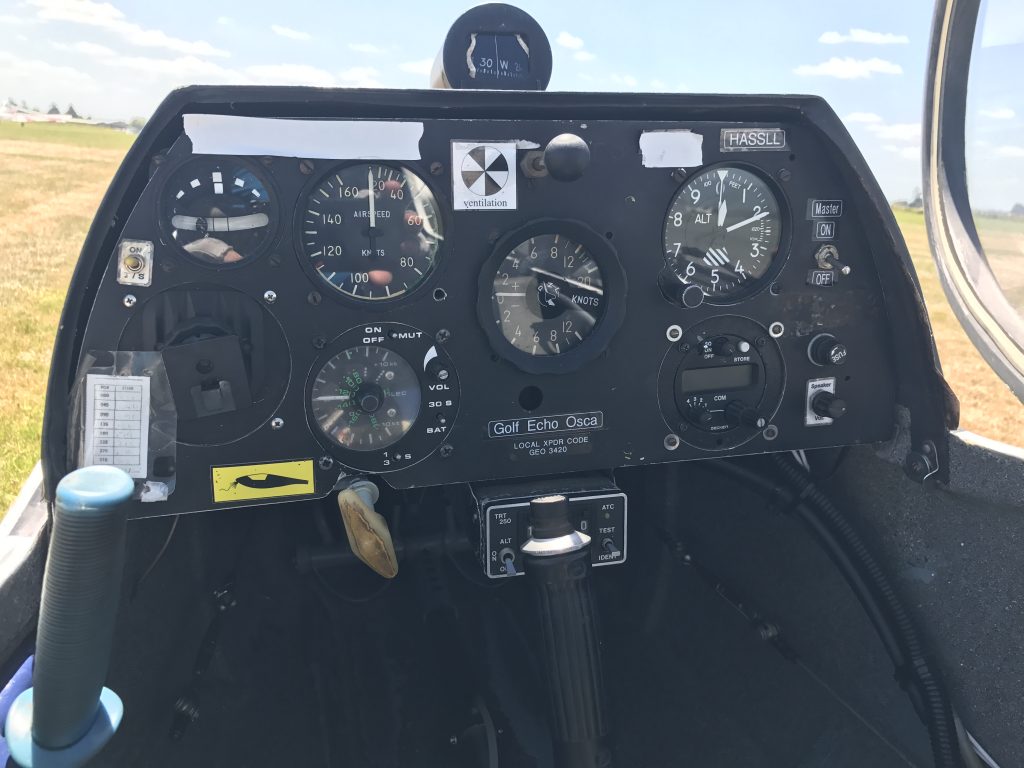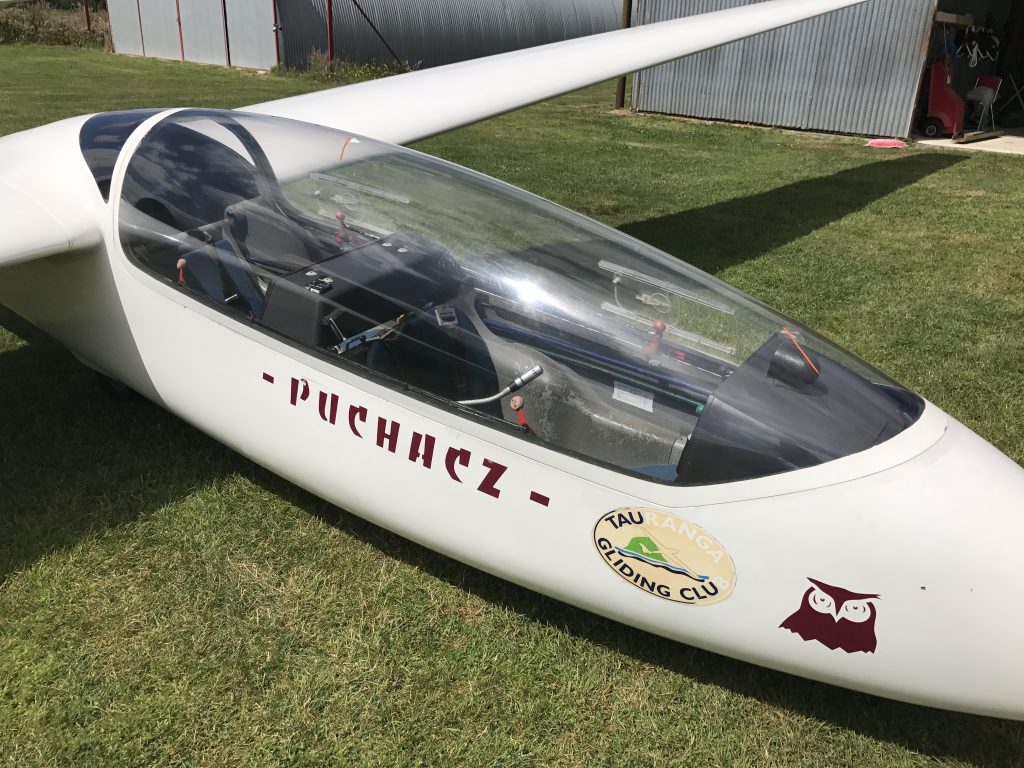Returning to North Island, I began my first explorations there.
About 3 hours drive south of Auckland lies Matamata, a big lush green valley that is mostly farm pastureland. This area was the setting for The Hobbit movies, and some of those sets were preserved and now are the popular theme park ‘Hobbiton’. More than half a million people tour ‘The Shire’ every year. I like the books more than the movies, and decided to skip the rather expensive ($79NZD) tour.


A hobbit-like playhouse in the yard of the lovely AirBnB place I stayed at Kaimai Sunset B&B.
When I expressed an interest in learning to fly and getting a private pilot’s license, my pilot friend Rob Baker suggested gliding as an alternative that has all the fun of flying without the expensive impracticalities of part-time motor flying. I figured out that I would have time in the spring of 2017 to do this in a very favorable location (Arizona), and discovered that there was a gliding club in central North Island New Zealand where I could try out soaring and see if I have the knack and enjoy it. I contacted the Matamata, NZ Piako Gliding Club, and scheduled an introductory flight, as well as five more that are allowed thereafter. The club members were friendly and welcoming, and it was a privilege to spend time with them and hear their stories. They even invited me to a no-host dinner they have before a board meeting.

Modern gliders are sleek and beautiful.

The cockpit is very form-fitting. No room for claustrophobia!
Tauranga Gliding Club is another, nearby club. Perhaps they bought this glider from them.

Yes, the wings are long!

There are fewer instruments in a glider than a motor plane. The ones of most interest are the altimeter at the top right. This one needs a minor adjustment to the field altitude of about 180 feet. The airspeed indicator is the next most important dial, as you must go fast enough so you don’t ‘stall’ (quit flying and drop like a stone), and yet not fly so fast that you exceed the structural strength of the glider and tear the wings off. In practice, it’s not so hard to stay in the safe zone. And then there is the ‘variometer’, which tells you with audio signals whether you are gaining altitude within the airmass you are flying in. It allows you to recognize areas of thermal or other lift, which are essential to staying aloft, as you don’t have an engine (in most gliders). No lift, short flight. You will hear it beeping in the video.

The rudder pedals are under the dashboard, and they control the rudder on the tail which makes the plane ‘yaw’ or turn. The stick in the middle controls your ailerons on the wings, which raise or lower each wing and help you turn, as well as controlling the speed of the glider by tilting the nose up or down. You need to learn to use the ailerons and rudder together in a co-ordinated fashion in order to efficiently turn the glider.

Here we are up at 2,450 feet altitude above mean sea level (which is 2,270 feet above ground level here), circling in order to stay in some rising air. The piece of yarn on the outside of the canopy is very important. It tells you whether you are flying straight into the wind. If it tilts top to the left, it means you are turned a bit too far to the left, and need to add in some right rudder. You learn to use the horizon as your speed guide, as you don’t really want to look down at the speed gauge too much. If you keep the same angle as you see here to the horizon, your speed stays steady. Lower the nose relative to the horizon, and you speed up.
Learning to fly is like learning to drive, but in 3 dimensions. At first, you are overwhelmed by all there is to do at once. With practice, as with driving, the basics become automatic, and your attention is freed to scan the dials as needed, and more importantly, look around you to make sure you don’t run into another aircraft! In just 6 flights, I am beginning to get the feel of this, but it is clear I need many more hours aloft in order to get good enough at it so I can safely go up on my own, alone. I have made plans to do this in Maricopa, Arizona in April.
Some of you who have not done this may wonder: is it scary? The answer is, for me, not at all. I have no fear of heights, perhaps due to my experience rock climbing. I like being up high, and find any bouncing around in turbulence fun rather than scary. It is a beautiful feeling to roll the glider into a turn, and climb in a column of invisible rising air. There is no amusement park ride to equal this. I look forward to becoming fluid at it, and then soaring with the hawks gracefully.
On my last flight, we caught good lift, and were up for 61 minutes. I was in control flying the glider for about half of that time, climbing in the thermals. We flew 64 miles in that hour, and gained about 3800 feet in thermals. It was a BLAST!

This is a GPS track of our flight using Motion-X GPS app. The spiraling is where we are climbing in a thermal. Then we’d go to below another cloud looking for lift.

The total ascent includes the tow to 2,000 feet AGL. Subtract that, and you get what we gained riding up on thermal lift.
Here is are a couple of videos that show our gliding in action:
soaring from Mel Malinowski on Vimeo.
This video shows our tow up to 2,000 feet AGL (above ground level) which is at a speed of about 70 knots (80 mph), and then some climbing in a thermal. The beeping you hear is the variometer. Higher pitched tones mean you are climbing. Lower or no tones mean you are not climbing, or descending. This particular glider normally descends at about 200 feet per minute in still air. So you need to climb at least that much per minute in order to stay up, or more if you want to build up reserve in order to fly between areas of lift.

A glider trailer. Apparently, when you buy a glider, you usually buy the trailer too and it comes in the trailer, some assembly required.
Reassembling Glider from Mel Malinowski on Vimeo.
This video shows a glider being reassembled. The experienced pilot flew this high performance glider to the north, believing he could find enough lift in order to fly around and then come back. Unfortunately, there was little lift where he was, and he had to land the glider in a ‘paddock’ or pasture. There are lots of them in this area, and the farmers are friendly and allow the retrieval of gliders. So a couple of his friends in the club hooked up the glider trailer, and drove 20 km to where he had landed. They took the wings and horizontal stabilizer from the tail off, put the glider in the trailer and brought it all back to the field. The wing has a structural beam that plugs into the body of the glider, and snaps securely into place. It only takes 10-15 minutes to reassemble the glider so it is ready to fly again.
SoaringTakeOff from Mel Malinowski on Vimeo.
A takeoff, and a landing.
More on soaring when I do my flight training in Arizona next spring.


Leave a Reply
You must be logged in to post a comment.